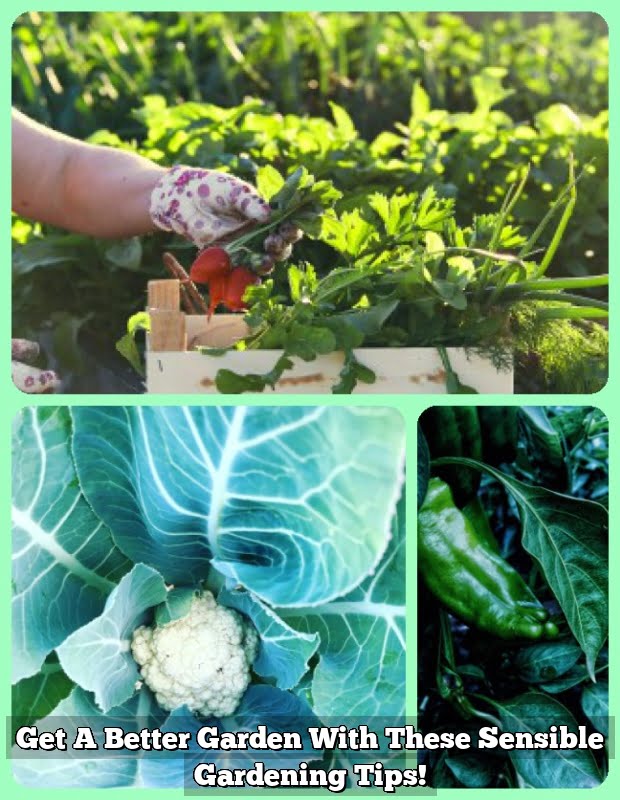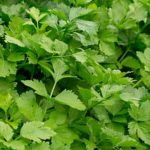As we welcome the arrival of spring, many gardeners are eager to get outside and start planting. April marks the beginning of prime vegetable gardening season, offering a wide range of opportunities to grow fresh and healthy produce.
In this blog post, we will explore the importance of vegetable gardening in April, the benefits of growing vegetables during this time, and provide an overview of what to expect in the upcoming sections. Whether you’re a seasoned gardener or just starting out, these April vegetable gardening tips will help you make the most of this bountiful season.
When it comes to vegetable gardening, April is a crucial time for planting various crops that can thrive in the early spring. From leafy greens to root vegetables and herbs, there is a diverse selection of plants that can be grown during this time. Understanding which vegetables are best suited for April planting and how to care for them is essential for a successful harvest later in the season.
In addition to discussing the best vegetables to plant in April and their ideal growing conditions, we will also explore essential tasks such as preparing the garden, maintenance tips, seasonal care advice, maximizing garden space, harvesting and storing techniques, as well as troubleshooting common issues that may arise. By following these tips and techniques, you can ensure a productive and rewarding experience with your April vegetable garden.
So let’s dive in and discover how to make the most out of your spring gardening endeavors.
Best Vegetables to Plant in April
April is a great time to start planting your vegetable garden, as the weather warms up and the risk of frost diminishes. There are plenty of vegetables that thrive when planted in April, providing a bountiful harvest later in the season. Here are some of the best vegetables to plant in April along with tips for successful planting:
1. Lettuce – Lettuce is a cool-season vegetable that does well in the moderate temperatures of April. It can be planted directly into the soil or in containers, and it thrives in partial shade.
2. Carrots – Carrots are root vegetables that can be planted early in the spring. They prefer loose, well-drained soil, so make sure to prepare the soil thoroughly before planting. They also benefit from consistent watering.
3. Spinach – Spinach is another cool-season crop that can be planted in April. It prefers rich, moist soil and partial shade, making it an ideal addition to any spring garden.
When planting these vegetables, it’s important to consider their ideal growing conditions. Providing them with the right environment will help them thrive and produce a healthy and abundant harvest. Keeping a schedule for watering and monitoring for pests will also ensure success in your April vegetable garden.
Overall, planting these vegetables in April sets you up for a successful gardening season while allowing you to enjoy fresh produce straight from your garden all summer long. Be sure to keep an eye on our blog for more April vegetable gardening tips as we continue our series on maximizing your spring garden.
Preparing the Garden
As the weather warms up in April, it’s the perfect time to prepare your garden for vegetable planting. Proper soil preparation is essential to ensure that your plants have a healthy environment to grow and thrive. Start by testing the pH levels of your soil to determine if any adjustments need to be made.
Most vegetables prefer a slightly acidic soil, with a pH level between 6.0 and 7.0. You can easily adjust the pH level by adding lime to raise it or sulfur to lower it.
In addition to adjusting the pH level, it’s important to enrich your soil with organic matter such as compost or well-rotted manure. This will provide essential nutrients for your plants and improve soil structure, drainage, and moisture retention. Use a garden fork or tiller to mix the organic matter into the top 6-8 inches of soil, ensuring that it is evenly distributed throughout the garden.
When preparing your garden for April vegetable planting, it’s also important to take stock of your gardening tools. Make sure you have all the necessary tools on hand, including a shovel, rake, hoe, and watering can or hose. Keeping your tools clean and sharp will make gardening tasks much easier and more efficient.
| April Vegetable Gardening Tips | Preparing the Garden |
|---|---|
| Importance of proper soil preparation | Testing pH levels and adjusting accordingly |
| Benefits of enriching soil with organic matter | Mixing organic matter into the topsoil |
| Necessary gardening tools for April vegetable planting | Cleaning and maintaining gardening tools for efficiency |
April Vegetable Gardening Maintenance
Watering Schedule for April Vegetables
In April, the weather can be unpredictable, with some days being warm and others bringing unexpected chilly temperatures. It’s important to establish a consistent watering schedule for your vegetables to ensure they receive the proper amount of moisture. When it comes to watering, it’s best to water deeply and less frequently to encourage strong root development. Consider using a soaker hose or drip irrigation system to deliver water directly to the roots and minimize evaporation.
Pest Control Tips for Vegetable Gardens
As the weather warms up in April, pests become more active in the garden. It’s essential to stay vigilant and implement pest control measures to protect your vegetables. Consider using natural methods such as introducing beneficial insects, like ladybugs or praying mantises, to combat common garden pests. Additionally, regular inspection of your plants can help you identify any pest infestations early on and take appropriate action.
Importance of Weeding and Pruning in April
Weeds can compete with your vegetables for nutrients and water, so it’s crucial to stay on top of weeding in your garden. With April being a prime growing season for many plants, it’s also an ideal time for pruning. Proper pruning techniques can help improve air circulation around your plants, reduce disease risk, and encourage healthy growth. Take the time to remove any dead or diseased foliage from your vegetable plants to promote their overall health and productivity.
Seasonal Care Tips
As the weather begins to warm up in April, it is crucial for vegetable gardeners to be prepared for unexpected frosts and sudden temperature changes. One of the most important seasonal care tips for April vegetable gardening is to protect your vegetables from these potential threats.
It is essential to have row covers or other protective barriers on hand to cover your plants in case of a late frost. Additionally, it is helpful to have a plan in place for providing extra warmth to your plants during cold snaps, whether it’s through the use of mulch or temporary covers.
In addition to protecting your vegetables from erratic weather, it is important to check on the health of your plants regularly. Keep an eye out for any signs of stress or disease, and address any issues as soon as they arise. By staying proactive and attentive, you can catch problems early on and prevent them from spreading throughout your garden.
Another key aspect of seasonal care in April vegetable gardening is adjusting your watering schedule as the weather fluctuates. As temperatures rise, your plants may require more frequent watering, so be mindful of their needs and adjust accordingly. Additionally, consider investing in a rain gauge to monitor rainfall levels and ensure that your garden is receiving an adequate amount of water.
By implementing these seasonal care tips, you can ensure that your April vegetable garden remains healthy and productive throughout the growing season. Being proactive about protecting your plants from frosts and temperature changes, monitoring their health regularly, and adjusting your watering schedule will set you up for success in growing a bountiful vegetable harvest.
Maximizing Space in April Vegetable Gardens
Vertical Gardening
One of the best ways to maximize space in your April vegetable garden is by using vertical gardening techniques. By utilizing trellises, stakes, and other supports, you can train vining vegetables such as tomatoes, cucumbers, and peas to grow upward instead of outward.
This not only saves space but also helps improve air circulation around the plants, reducing the risk of diseases. Additionally, vertical gardening can make it easier to harvest your vegetables since they will be more accessible and less likely to become damaged.
Companion Planting
Another strategy for maximizing space in your April vegetable garden is through companion planting. Certain plants can be grown together to benefit each other by deterring pests, providing nutrients, or improving flavor. For example, planting basil near tomatoes can help repel pests that commonly affect tomato plants.
Similarly, growing radishes alongside carrots can help deter carrot flies. By carefully planning which vegetables to plant next to each other, you can make the most of your garden space while promoting healthy growth for your April vegetables.
Container Gardening
If you have limited outdoor space or poor soil quality in your yard, container gardening is an excellent option for growing vegetables in April. Many types of vegetables are well-suited for container gardening, including lettuce, spinach, peppers, and herbs. Choose containers that are large enough for the mature size of the plant and ensure they have proper drainage holes to prevent water-logging.
Place your containers in a sunny spot and regularly water and fertilize your plants according to their specific needs. Container gardening not only maximizes limited space but also allows for greater flexibility in moving plants around as needed.
By implementing these strategies for maximizing space in your April vegetable garden, you can make the most of whatever area you have available while still enjoying a bountiful harvest at the end of the season. Whether it’s through vertical gardening, companion planting, or container gardening – there are numerous ways to grow a successful vegetable garden in April even if space is limited.
Harvesting and Storing April Vegetables
April is a great time to start harvesting and enjoying the fruits of your labor in the vegetable garden. With the right timing and proper techniques, you can ensure that your April vegetables are at their peak flavor and nutritional value when it’s time to harvest. In this section, we will discuss the signs to look for when your vegetables are ready for harvesting, as well as some tips for storing them to maintain their freshness.
When it comes to harvesting April vegetables, it’s important to know the specific signs to look for with each type of vegetable. For example, leafy greens like lettuce and spinach should be harvested when they have reached a size that is suitable for consumption, but before they bolt or go to seed.
Root vegetables such as carrots and radishes should be pulled from the ground when they have reached a mature size and are still tender. By paying attention to these signs, you can ensure that you are harvesting your vegetables at the peak of their flavor and texture.
Once you have successfully harvested your April vegetables, proper storage techniques will help maintain their freshness and maximize their shelf life. Some general tips include removing any excess dirt or debris from the vegetables before storing them, as well as ensuring that they are stored in a cool, dry place.
Some vegetables may benefit from being stored in breathable containers or bags, while others may require refrigeration to stay fresh longer. Properly storing your harvested vegetables not only extends their shelf life but also ensures that you can enjoy them at their best quality.
In summary, by understanding the signs of readiness for harvest and practicing proper storage techniques, you can make the most of your April vegetable garden. The satisfaction of harvesting and enjoying your own homegrown produce is one of the greatest joys of vegetable gardening. With these tips in mind, you can ensure that your hard work pays off with delicious and nutritious April vegetables on your table.
| Harvesting Tips | Storing Tips |
|---|---|
| Look out for mature size and tender texture | Remove excess dirt before storage |
| Pick leafy greens before bolting | Store in cool dry place or refrigerate if necessary |
| Pull root vegetables at maturity | Use breathable containers or bags if needed |
Troubleshooting Common Issues
As the temperatures rise and the days grow longer, April is a crucial time for vegetable gardening. However, with this important growing season comes a new set of challenges that gardeners may encounter. In this section, we will discuss how to troubleshoot and address common issues that may arise in your vegetable garden in April.
One of the most common problems that gardeners face in April is dealing with pests. From aphids to caterpillars, these unwelcome visitors can wreak havoc on your precious plants if not addressed promptly. It’s important to regularly inspect your vegetable garden for any signs of pest infestations and take appropriate action to control them. This can include using natural predators, such as ladybugs or praying mantises, or applying organic pest control methods to keep these pests at bay.
In addition to pests, nutrient deficiencies can also be an issue for April vegetables. As the plants start their growth spurt, they will require more nutrients to thrive. Signs of nutrient deficiencies can manifest as yellowing leaves, stunted growth, or poor fruit development. Regularly testing the soil pH levels and providing the necessary nutrients through compost or organic fertilizers can help prevent these issues from occurring and keep your vegetables healthy throughout the growing season.
Lastly, diseases can pose a threat to April vegetables if not properly managed. Common diseases such as powdery mildew or blight can quickly spread and decimate an entire crop if left unchecked. It’s essential to monitor the overall health of your plants and promptly address any signs of disease by removing affected plant parts and applying organic fungicides as needed.
By being proactive in identifying and addressing these common issues in your April vegetable garden, you can ensure a bountiful harvest of healthy and delicious produce for you and your family to enjoy throughout the season.
Conclusion
In conclusion, April vegetable gardening is a crucial activity for anyone looking to enjoy fresh, nutritious produce throughout the spring and summer months. As highlighted in this blog post, the benefits of growing vegetables in April are numerous, from providing your family with healthy food options to enjoying the therapeutic benefits of gardening. By following the tips and techniques shared here, gardeners can ensure successful growth and bountiful harvests of their favorite vegetables.
As we wrap up this discussion on April vegetable gardening tips, I encourage you to put these insights into practice. Whether you have a large backyard or limited space on a balcony or patio, there are options for everyone to take part in growing their own vegetables.
By preparing your garden properly, maintaining it diligently, and making use of space-saving techniques like vertical gardening and container gardening, you can maximize your yield and enjoy the full benefits of your efforts.
I also invite you to share your own experiences with April vegetable gardening. With each season comes new challenges and successes, and by engaging with others in the community through comments and social media platforms, we can all learn from each other’s experiences. So get out there, put on those gardening gloves, and start planting your favorite vegetables for a bountiful harvest this spring.
Frequently Asked Questions
What Vegetables Should Be Planted in April?
In April, it’s a good time to plant vegetables like carrots, lettuce, spinach, radishes, and peas. These cool-season crops will thrive in the moderate temperatures of spring and can be started from seeds or seedlings.
How Do I Prepare My Garden for April?
To prepare your garden for April, start by cleaning up any debris, turning over the soil, and adding compost or other organic matter to enrich the soil. You can also start planning and marking out where you want to plant your vegetables for the season.
Is It Too Late to Plant Vegetable Seeds in April?
It’s not too late to plant vegetable seeds in April, especially for fast-growing varieties like lettuce, radishes, and spinach. Just make sure to choose vegetables with shorter maturity dates so they have enough time to grow before the hotter temperatures of summer arrive.
With proper care and attention, you can still have a successful vegetable garden even if you’re starting seeds in April.

If you’re looking to get into vegetable gardening, or are just looking for some tips on how to make your current garden better, then you’ve come to the right place! My name is Ethel and I have been gardening for years. In this blog, I’m going to share with you some of my best tips on how to create a successful vegetable garden.





